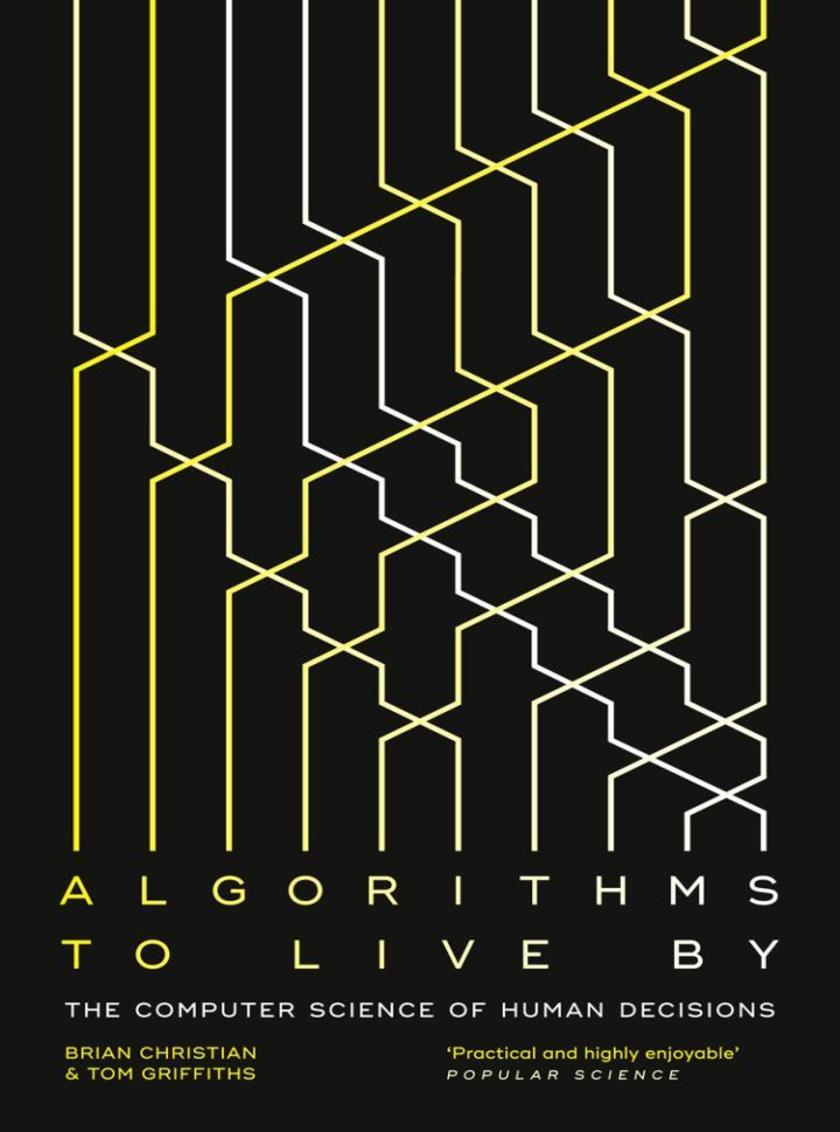
Algorithms To Live By: The Computer Science of Human Decisions
¥76.91
A fascinating exploration of how computer algorithms can be applied to our everyday lives. What should we do, or leave undone, in a day or a lifetime Exploring how insights from computer algorithms can be applied to our everyday lives, ‘Algorithms To Live By’ helps to solve common decision-making problems and illuminate the workings of the human mind. When should you switch between different tasks, and how many tasks should you take on in the first place How much messiness should you accept What balance of new activities and familiar favourites is the most fulfilling When computers face constraints of time and space, they too must untangle very human questions: how to have better hunches, when to leave things to chance, how to deal with overwhelming choices and how best to connect with others. And the solutions they’ve found have much to teach us. Acclaimed author Brian Christian and cognitive scientist Tom Griffiths show how the algorithms developed for computers can be applied from finding your spouse to finding a parking spot, from organizing your inbox to understanding the workings of memory. Where you have a dilemma, they have a rule, and each fascinating algorithm turns the wisdom of computer science into strategies for human living.
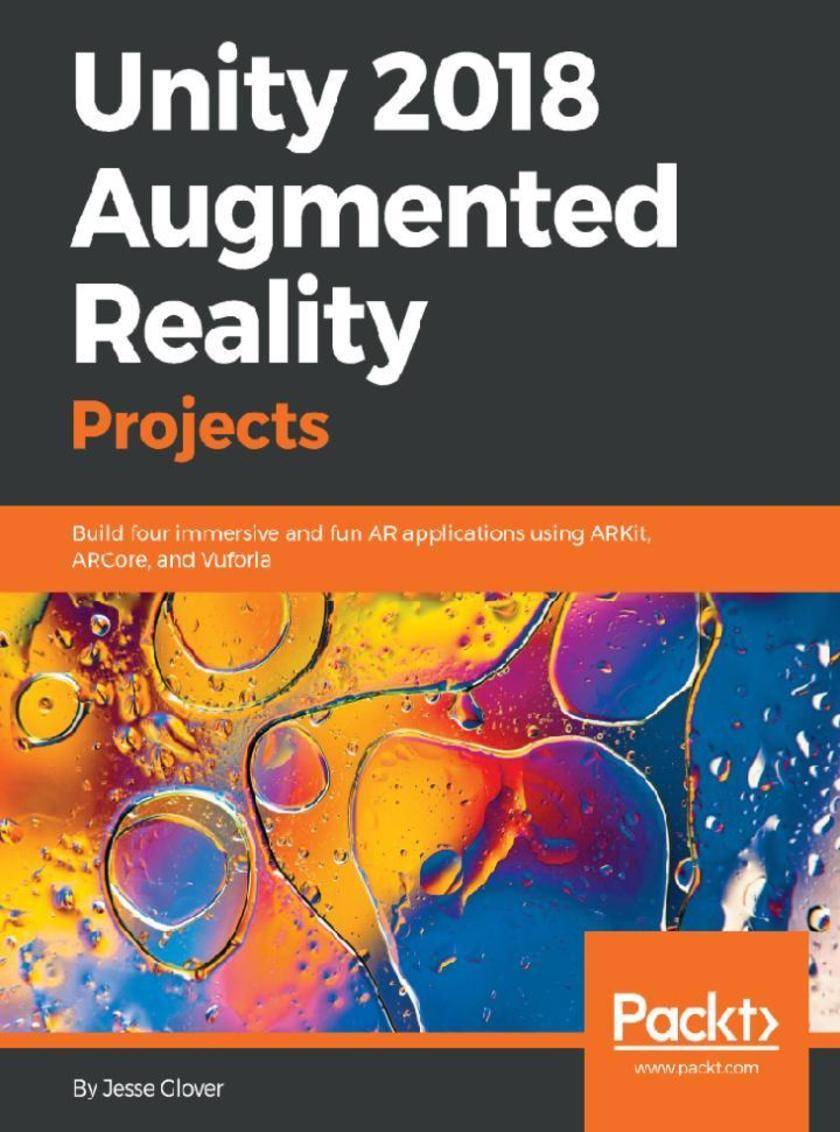
Unity 2018 Augmented Reality Projects
¥78.47
Learn the fundamentals of Java EE 8 APIs to build effective web services Key Features *Design modern and stylish web services with Java EE APIs *Secure your web services with JSON Web Tokens *Explore the advanced concepts of RESTful web services and the JAX-RS API Book Description Java Enterprise Edition is one of the leading application programming platforms for enterprise Java development. With Java EE 8 finally released and the first application servers now available, it is time to take a closer look at how to develop modern and lightweight web services with the latest API additions and improvements. Building RESTful Web Services with Java EE 8 is a comprehensive guide that will show you how to develop state-of-the-art RESTful web services with the latest Java EE 8 APIs. You will begin with an overview of Java EE 8 and the latest API additions and improvements. You will then delve into the details of implementing synchronous RESTful web services and clients with JAX-RS. Next up, you will learn about the specifics of data binding and content marshalling using the JSON-B 1.0 and JSON-P 1.1 APIs. This book also guides you in leveraging the power of asynchronous APIs on the server and client side, and you will learn to use server-sent events (SSEs) for push communication. The final section covers advanced web service topics such as validation, JWT security, and diagnosability. By the end of this book, you will have implemented several working web services and have a thorough understanding of the Java EE 8 APIs required for lightweight web service development. What you will learn *Dive into the latest Java EE 8 APIs relevant for developing web services *Use the new JSON-B APIs for easy data binding *Understand how JSON-P API can be used for flexible processing *Implement synchronous and asynchronous JAX-RS clients *Use server-sent events to implement server-side code *Secure Java EE 8 web services with JSON Web Tokens Who this book is for If you're a Java developer who wants to learn how to implement web services using the latest Java EE 8 APIs, this book is for you. Though no prior knowledge of Java EE 8 is required, experience with a previous Java EE version will be beneficial.
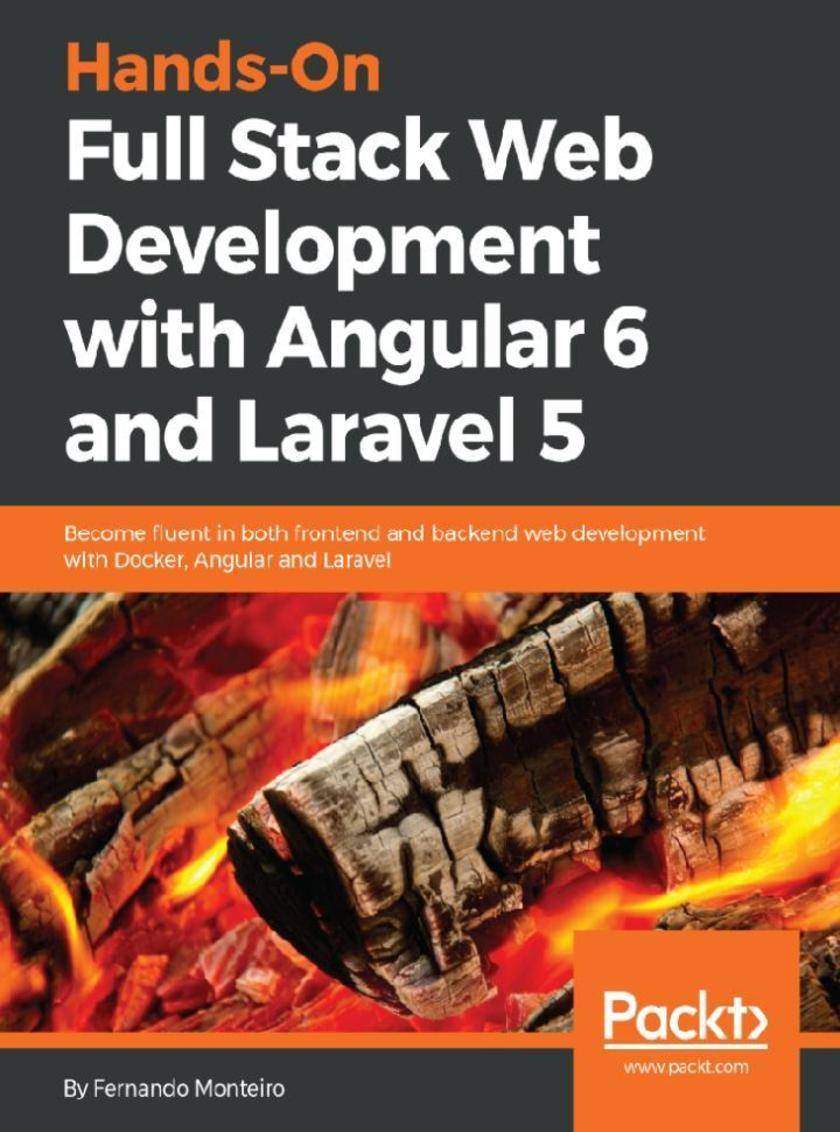
Hands-On Full Stack Web Development with Angular 6 and Laravel 5
¥78.47
Implement intelligent agents using PyTorch to solve classic AI problems, play console games like Atari, and perform tasks such as autonomous driving using the CARLA driving simulator Key Features *Explore the OpenAI Gym toolkit and interface to use over 700 learning tasks *Implement agents to solve simple to complex AI problems *Study learning environments and discover how to create your own Book Description Many real-world problems can be broken down into tasks that require a series of decisions to be made or actions to be taken. The ability to solve such tasks without a machine being programmed requires a machine to be artificially intelligent and capable of learning to adapt. This book is an easy-to-follow guide to implementing learning algorithms for machine software agents in order to solve discrete or continuous sequential decision making and control tasks. Hands-On Intelligent Agents with OpenAI Gym takes you through the process of building intelligent agent algorithms using deep reinforcement learning starting from the implementation of the building blocks for configuring, training, logging, visualizing, testing, and monitoring the agent. You will walk through the process of building intelligent agents from scratch to perform a variety of tasks. In the closing chapters, the book provides an overview of the latest learning environments and learning algorithms, along with pointers to more resources that will help you take your deep reinforcement learning skills to the next level. What you will learn *Explore intelligent agents and learning environments *Understand the basics of RL and deep RL *Get started with OpenAI Gym and PyTorch for deep reinforcement learning *Discover deep Q learning agents to solve discrete optimal control tasks *Create custom learning environments for real-world problems *Apply a deep actor-critic agent to drive a car autonomously in CARLA *Use the latest learning environments and algorithms to upgrade your intelligent agent development skills Who this book is for If you’re a student, game/machine learning developer, or AI enthusiast looking to get started with building intelligent agents and algorithms to solve a variety of problems with the OpenAI Gym interface, this book is for you. You will also find this book useful if you want to learn how to build deep reinforcement learning-based agents to solve problems in your domain of interest. Though the book covers all the basic concepts that you need to know, some working knowledge of Python programming language will help you get the most out of it.
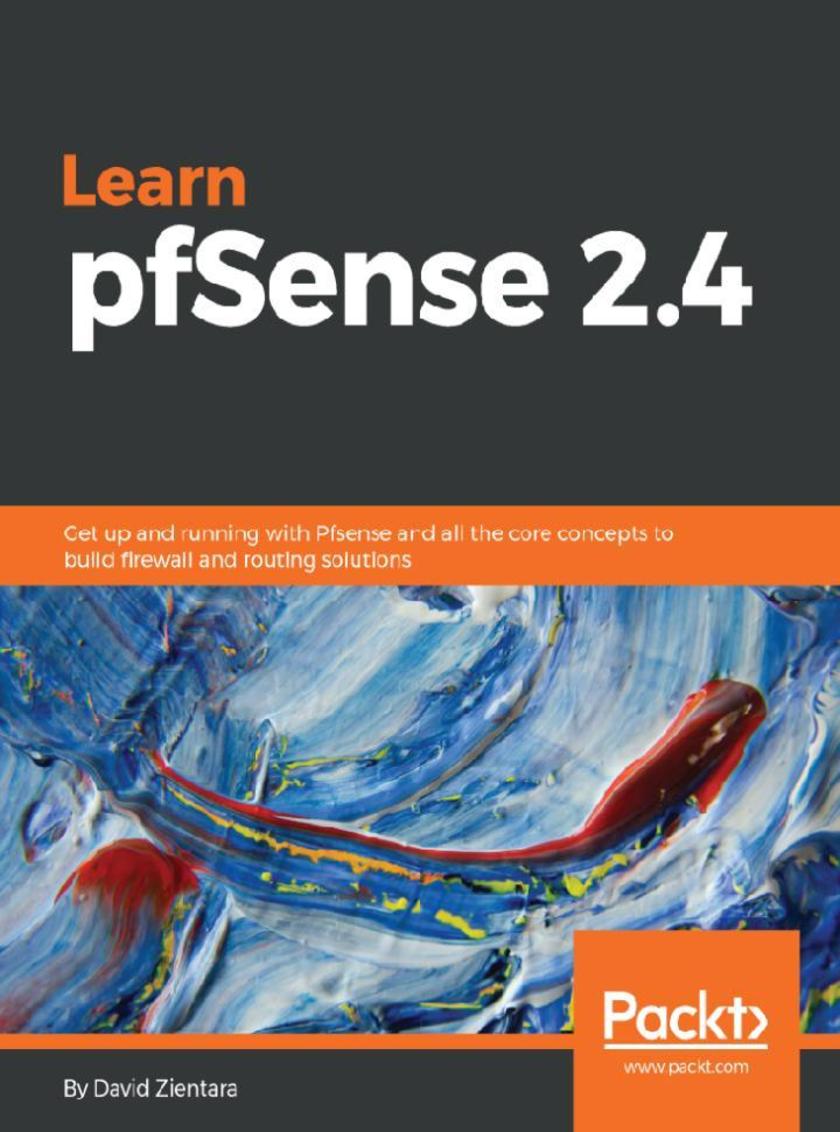
Learn pfSense 2.4
¥78.47
Build, design, and style beautiful and informative applications on the Salesforce Lightning platform Key Features *Build and Test Lightning Components that enhance application usability and adaptability *Apply Security Best Practices to your Custom Lightning Components *Design Lightning Components for Salesforce UIs such as Lightning Pages, Salesforce 1 Application, Communities, and more. Book Description Built on the Salesforce App Cloud, the new Salesforce Lightning Experience combines three major components: Lightning Design System, Lightning App Builder, and Lightning Components, to provide an enhanced user experience. This book will enable you to quickly create modern, enterprise apps with Lightning Component Framework. You will start by building simple Lightning Components and understanding the Lightning Components architecture. The chapters cover the basics of Lightning Component Framework semantics and syntax, the security features provided by Locker Service, and use of third-party libraries inside Lightning Components. The later chapters focus on debugging, performance tuning, testing using Lightning Testing Services, and how to publish Lightning Components on Salesforce AppExchange. What you will learn *Understand Lightning Components architecture *Learn Locker security best practices *Debug and Improve performance of your Lightning Components *Use third-party libraries along with Lightning Component Framework *Learn how to publish Lightning Components on AppExchange *Use Lightning Out to take your Lightning Components outside the Salesforce platform Who this book is for This book is for Salesforce developers or developers from other platforms who are familiar with HTML, CSS, and JavaScript and want to build and test Salesforce Lightning components. No knowledge of Salesforce Lightning is required.
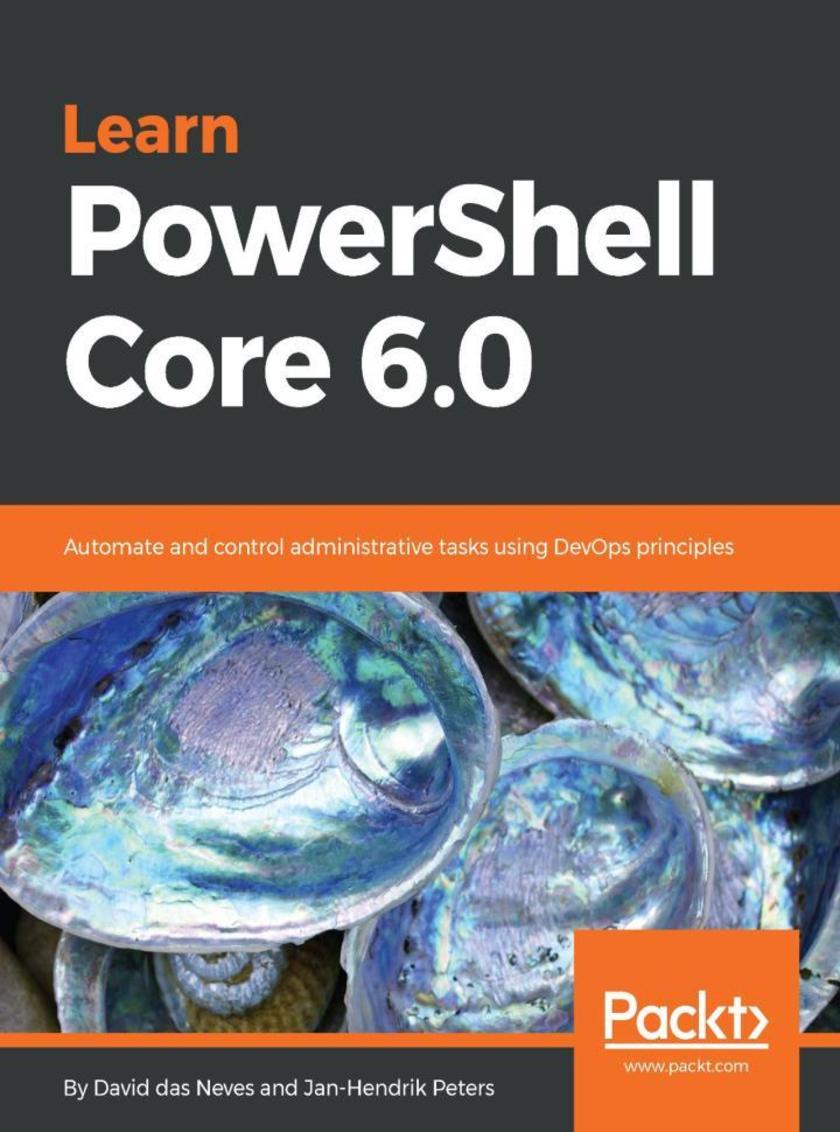
Learn PowerShell Core 6.0
¥78.47
Enhance your skills in expert module development, deployment, security, DevOps, and cloud Key Features *A step-by-step guide to get you started with PowerShell Core 6.0 *Harness the capabilities of PowerShell Core 6.0 to perform simple to complex administration tasks *Learn core administrative concepts such as scripting, pipelines, and DSC Book Description Beginning with an overview of the different versions of PowerShell, Learn PowerShell Core 6.0 introduces you to VSCode and then dives into helping you understand the basic techniques in PowerShell scripting. You will cover advanced coding techniques, learn how to write reusable code as well as store and load data with PowerShell. This book will help you understand PowerShell security and Just Enough Administration, enabling you to create your own PowerShell repository. The last set of chapters will guide you in setting up, configuring, and working with Release Pipelines in VSCode and VSTS, and help you understand PowerShell DSC. In addition to this, you will learn how to use PowerShell with Windows, Azure, Microsoft Online Services, SCCM, and SQL Server. The final chapter will provide you with some use cases and pro tips. By the end of this book, you will be able to create professional reusable code using security insight and knowledge of working with PowerShell Core 6.0 and its most important capabilities. What you will learn *Get to grips with Powershell Core 6.0 *Explore basic and advanced PowerShell scripting techniques *Get to grips with Windows PowerShell Security *Work with centralization and DevOps with PowerShell *Implement PowerShell in your organization through real-life examples *Learn to create GUIs and use DSC in production Who this book is for If you are a Windows administrator or a DevOps user who wants to leverage PowerShell to automate simple to complex tasks, then this book is for you. Whether you know nothing about PowerShell or just enough to get by, this guide will give you what you need to go to take your scripting to the next level. You’ll also find this book useful if you’re a PowerShell expert looking to expand your knowledge in areas such as PowerShell Security and DevOps.
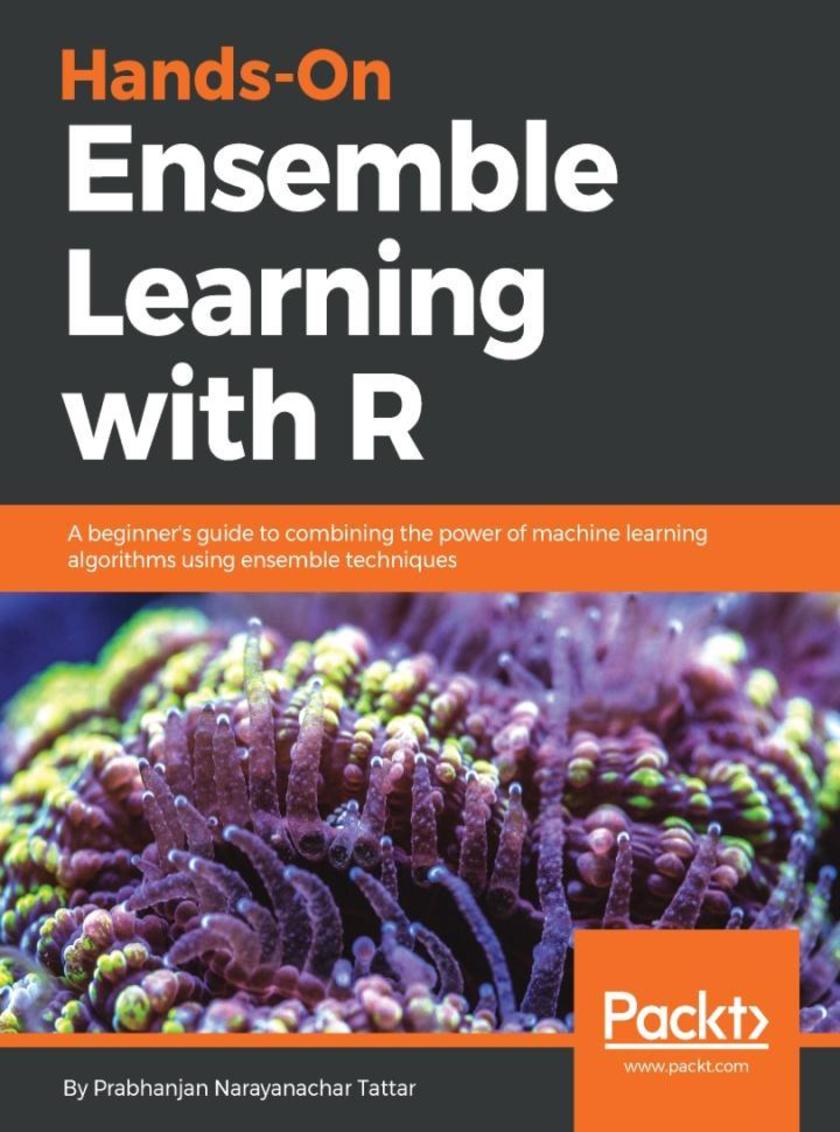
Hands-On Ensemble Learning with R
¥78.47
Explore powerful R packages to create predictive models using ensemble methods Key Features *Implement machine learning algorithms to build ensemble-efficient models *Explore powerful R packages to create predictive models using ensemble methods *Learn to build ensemble models on large datasets using a practical approach Book Description Ensemble techniques are used for combining two or more similar or dissimilar machine learning algorithms to create a stronger model. Such a model delivers superior prediction power and can give your datasets a boost in accuracy. Hands-On Ensemble Learning with R begins with the important statistical resampling methods. You will then walk through the central trilogy of ensemble techniques – bagging, random forest, and boosting – then you'll learn how they can be used to provide greater accuracy on large datasets using popular R packages. You will learn how to combine model predictions using different machine learning algorithms to build ensemble models. In addition to this, you will explore how to improve the performance of your ensemble models. By the end of this book, you will have learned how machine learning algorithms can be combined to reduce common problems and build simple efficient ensemble models with the help of real-world examples. What you will learn *Carry out an essential review of re-sampling methods, bootstrap, and jackknife *Explore the key ensemble methods: bagging, random forests, and boosting *Use multiple algorithms to make strong predictive models *Enjoy a comprehensive treatment of boosting methods *Supplement methods with statistical tests, such as ROC *Walk through data structures in classification, regression, survival, and time series data *Use the supplied R code to implement ensemble methods *Learn stacking method to combine heterogeneous machine learning models Who this book is for This book is for you if you are a data scientist or machine learning developer who wants to implement machine learning techniques by building ensemble models with the power of R. You will learn how to combine different machine learning algorithms to perform efficient data processing. Basic knowledge of machine learning techniques and programming knowledge of R would be an added advantage.
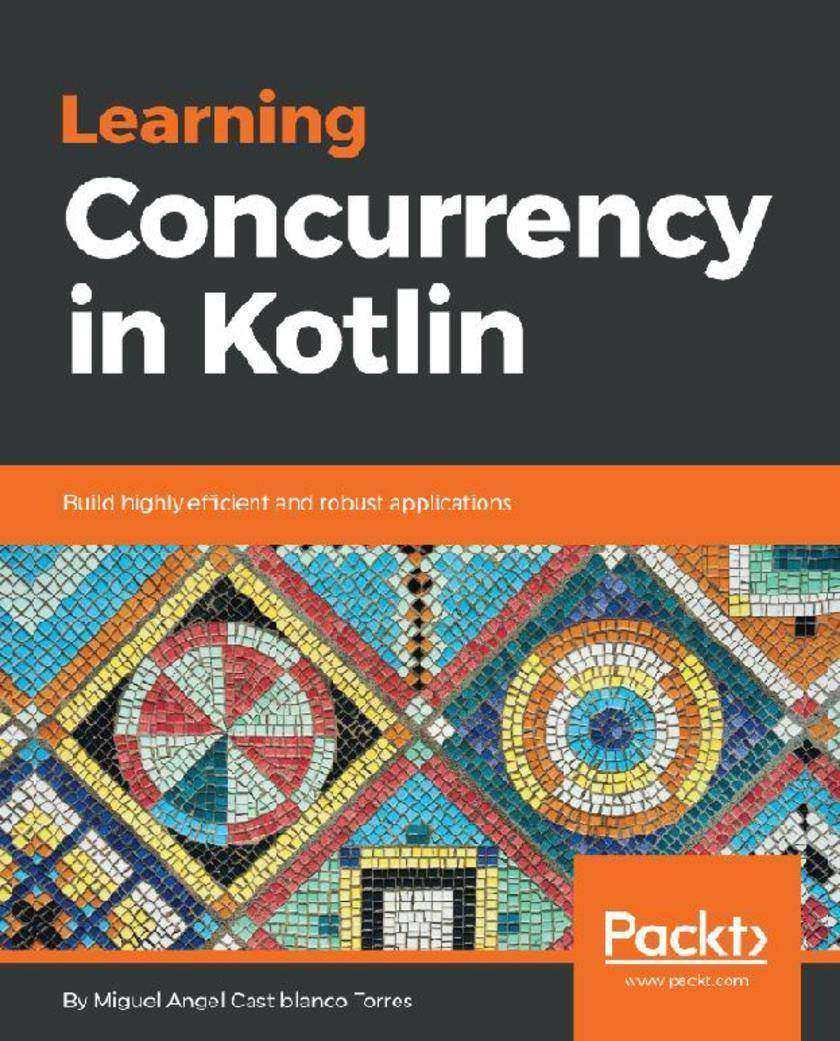
Learning Concurrency in Kotlin
¥78.47
Leverage the power of Elixir programming language to solve practical problems associated with scalability, concurrency, fault tolerance, and high availability. Key Features *Enhance your Elixir programming skills using its powerful tools and abstractions *Discover how to develop a full-fledged file server *Understand how to use Phoenix to create a web interface for your application. Book Description Running concurrent, fault-tolerant applications that scale is a very demanding responsibility. After learning the abstractions that Elixir gives us, developers are able to build such applications with inconceivable low effort. There is a big gap between playing around with Elixir and running it in production, serving live requests. This book will help you fll this gap by going into detail on several aspects of how Elixir works and showing concrete examples of how to apply the concepts learned to a fully fledged application. In this book, you will learn how to build a rock-solid application, beginning by using Mix to create a new project. Then you will learn how the use of Erlang's OTP, along with the Elixir abstractions that run on top of it (such as GenServer and GenStage), that allow you to build applications that are easy to parallelize and distribute. You will also master supervisors (and supervision trees), and comprehend how they are the basis for building fault-tolerant applications. Then you will use Phoenix to create a web interface for your application. Upon fnishing implementation, you will learn how to take your application to the cloud, using Kubernetes to automatically deploy, scale, and manage it. Last, but not least, you will keep your peace of mind by learning how to thoroughly test and then monitor your application. What you will learn *Use Elixir tools, including IEx and Mix *Find out how an Elixir project is structured and how to create umbrella applications *Discover the power of supervision trees, the basis for fault-tolerance *Create a Domain-Specifc Language (DSL) that abstracts complexity *Create a blazing-fast web interface for your application with Phoenix *Set up an automatic deployment process for the cloud *Monitor your application and be warned if anything unexpected happens Who this book is for Mastering Elixir is for you if you have experience in Elixir programming and want to take it to the next level. This Elixir book shows you how to build, deploy, and maintain robust applications, allowing you to go from tinkering with Elixir on side projects to using it in a live environment. However, no prior knowledge of Elixir is required to enjoy the complex topics covered in the book.
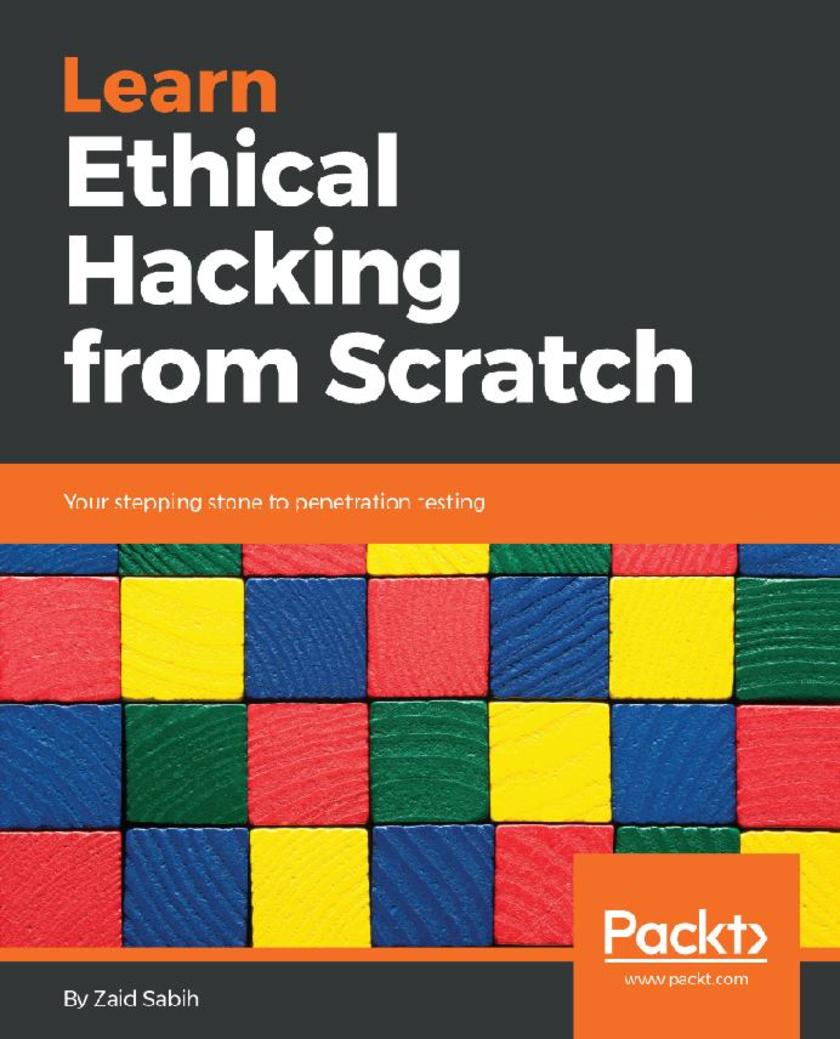
Learn Ethical Hacking from Scratch
¥78.47
Install, Configure and Setup different connections with pfSense Key Features *Build firewall and routing solutions with PfSense. *Learn how to create captive portals, how to connect Pfsense to your https environment and so on. *Practical approach towards building firewall solutions for your organization Book Description As computer networks become ubiquitous, it has become increasingly important to both secure and optimize our networks. pfSense, an open-source router/firewall, provides an easy, cost-effective way of achieving this – and this book explains how to install and configure pfSense in such a way that even a networking beginner can successfully deploy and use pfSense. This book begins by covering networking fundamentals, deployment scenarios, and hardware sizing guidelines, as well as how to install pfSense. The book then covers configuration of basic services such as DHCP, DNS, and captive portal and VLAN configuration. Careful consideration is given to the core firewall functionality of pfSense, and how to set up firewall rules and traffic shaping. Finally, the book covers the basics of VPNs, multi-WAN setups, routing and bridging, and how to perform diagnostics and troubleshooting on a network. What you will learn *Install pfSense *Configure additional interfaces, and enable and configure DHCP *Understand Captive portal *Understand firewalls and NAT, and traffic shaping *Learn in detail about VPNs *Understand Multi-WAN *Learn about routing and bridging in detail *Understand the basics of diagnostics and troubleshooting networks Who this book is for This book is towards any network security professionals who want to get introduced to the world of firewalls and network configurations using Pfsense. No knowledge of PfSense is required
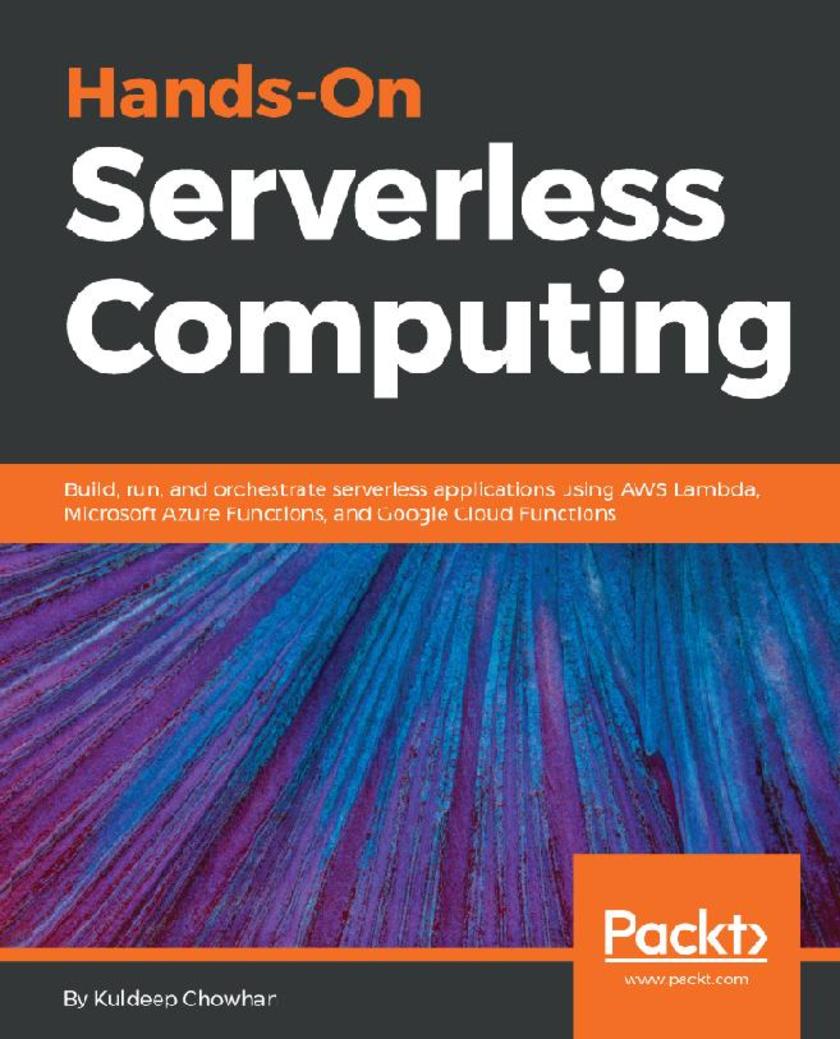
Hands-On Serverless Computing
¥78.47
Deploy functions efficiently using different cloud-based serverless offerings Key Features *Understand the concept of Function-as-a-Service *Implement Serverless solutions using AWS Lambda, Azure Functions and Google Cloud Functions *Practical approach towards choosing the best tool for your serverless environment Book Description Serverless applications and architectures are gaining momentum and are increasingly being used by companies of all sizes. Serverless software takes care of many problems that developers face when running systems and servers, such as fault tolerance, centralized logging, horizontal scalability, and deployments. You will learn how to harness serverless technology to rapidly reduce production time and minimize your costs, while still having the freedom to customize your code, without hindering functionality. Upon finishing the book, you will have the knowledge and resources to build your own serverless application hosted in AWS, Microsoft Azure, or Google Cloud Platform, and will have experienced the benefits of event-driven technology for yourself. This hands-on guide dives into the basis of serverless architectures and how to build them using Node.js as a programming language, Visual Studio Code for code editing, and Postman for quickly and securely developing applications without the hassle of configuring and maintaining infrastructure on three public cloud platforms. What you will learn *Understand the benefts of serverless computing and know when to use it *Develop serverless applications on AWS, Azure, and Google Cloud *Get to grips with Function as a Service (FaaS) *Apply triggers to serverless functions *Build event-driven apps using serverless frameworks *Use the Node.js programming language to build serverless apps *Use code editors, such as Visual Studio Code, as development environments *Master the best development practices for creating scalable and practical solutions Who this book is for This book is targeted towards developers, system administrators or any stakeholder working in the Serverless environment and want to understand how functions work. Basic idea of serverless architecture can be an added advantage

Git Version Control Cookbook
¥78.47
A series of practical recipes to simplify the Git learning experience and increase your productivity when using Git version control Key Features *Explore practical recipes to use Git’s most advanced features *Learn how Git references its objects and how history is recorded *Use reflog and git fsck to recover lost information Book Description Git is one of the most popular tools for versioning. Git Version Control Cookbook builds on the success of the previous edition and provides you with an up-to-date guide to solving problems related to versioning. You’ll start by learning about the Git data model and how it stores files and looks at commits. By using simple commands, you’ll learn how to navigate through the database. Once you have accustomed yourself to the basics, you’ll explore techniques to configure Git with comprehensive examples and configuration targets. You’ll gain insights into improving your understanding of branches and recovery from mistakes — right from committing to a wrong branch to recovering lost commits or files. You’ll then move on to discovering the features that Git rebase has to offer and use regular Git merge on other branches. You’ll explore Git notes and learn how to utilize the update, list, and search commands. In addition to this, you’ll learn how to extract metadata from repositories and automate your daily tasks using Git hooks. You’ll then study in detail repository maintenance, patching, and offline sharing. By the end of the book, you’ll have grasped various tips and tricks for everyday usage, while increasing your knowledge of Git providers, integrations, and clients. What you will learn *Understand the Git data model and use commands to navigate the database *Find out how you can recover lost commits or files *Force a rebase on some branches and use regular Git to merge on the rest *Master the techniques required to extract metadata from repositories *Explore Git notes and learn about the various features that it offers *See how to decode different subcommands Who this book is for The Git Version Control Cookbook is for you if you are a developer or Build Release manager looking for a full-fledged practical guide that will take your Git knowledge to the next level. Basic knowledge of GNU tools and shell or bash scripting is needed.
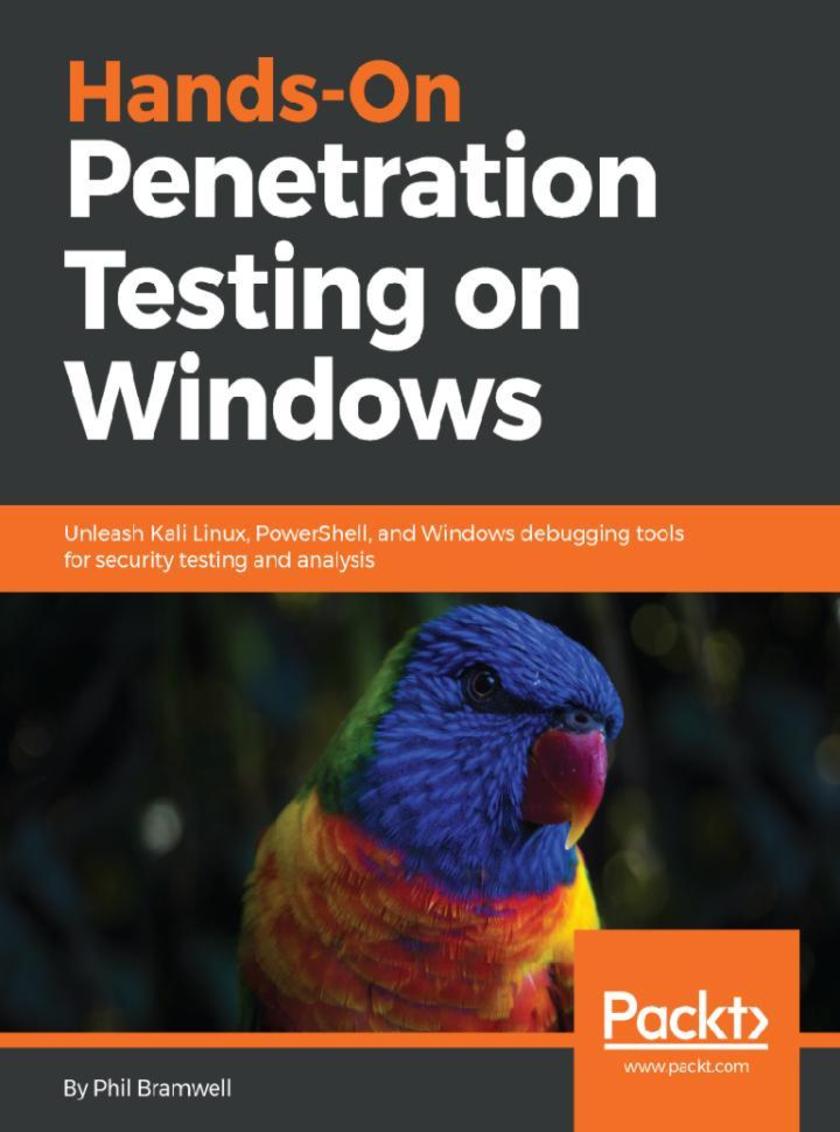
Hands-On Penetration Testing on Windows
¥78.47
Master the art of identifying vulnerabilities within the Windows OS and develop the desired solutions for it using Kali Linux. Key Features *Identify the vulnerabilities in your system using Kali Linux 2018.02 *Discover the art of exploiting Windows kernel drivers *Get to know several bypassing techniques to gain control of your Windows environment Book Description Windows has always been the go-to platform for users around the globe to perform administration and ad hoc tasks, in settings that range from small offices to global enterprises, and this massive footprint makes securing Windows a unique challenge. This book will enable you to distinguish yourself to your clients. In this book, you'll learn advanced techniques to attack Windows environments from the indispensable toolkit that is Kali Linux. We'll work through core network hacking concepts and advanced Windows exploitation techniques, such as stack and heap overflows, precision heap spraying, and kernel exploitation, using coding principles that allow you to leverage powerful Python scripts and shellcode. We'll wrap up with post-exploitation strategies that enable you to go deeper and keep your access. Finally, we'll introduce kernel hacking fundamentals and fuzzing testing, so you can discover vulnerabilities and write custom exploits. By the end of this book, you'll be well-versed in identifying vulnerabilities within the Windows OS and developing the desired solutions for them. What you will learn *Get to know advanced pen testing techniques with Kali Linux *Gain an understanding of Kali Linux tools and methods from behind the scenes *See how to use Kali Linux at an advanced level *Understand the exploitation of Windows kernel drivers *Understand advanced Windows concepts and protections, and how to bypass them using Kali Linux *Discover Windows exploitation techniques, such as stack and heap overflows and kernel exploitation, through coding principles Who this book is for This book is for penetration testers, ethical hackers, and individuals breaking into the pentesting role after demonstrating an advanced skill in boot camps. Prior experience with Windows exploitation, Kali Linux, and some Windows debugging tools is necessary
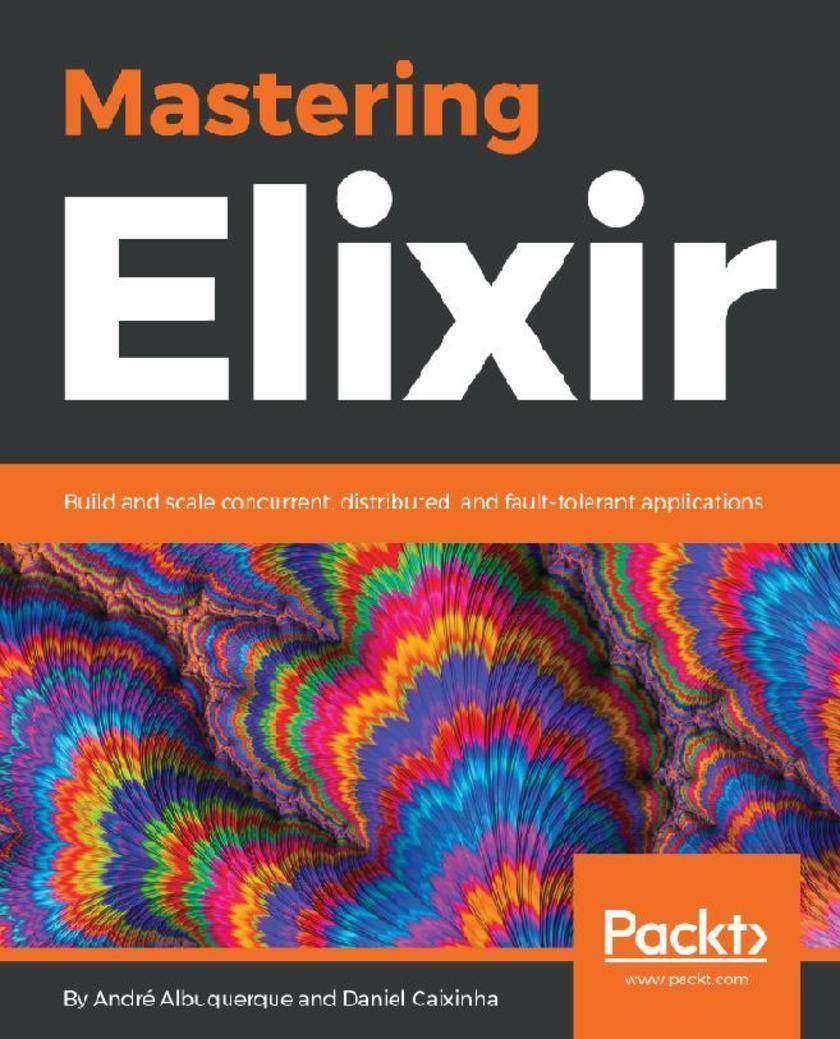
Mastering Elixir
¥78.47
Bring your data to life with Power BI Key Features *Get to grips with the fundamentals of Microsoft Power BI and its Business Intelligence capabilities *Build accurate analytical models, reports and dashboards? *Get faster and more intuitive insights from your data using Microsoft Power BI Book Description Microsoft Power BI is a cloud-based service that helps you easily visualize and share insights using your organization's data.This book will get you started with business intelligence using the Power BI toolset, covering essential concepts such as installation,designing effective data models, as well as building basic dashboards and visualizations to make your data come to life You will learn how to get your data the way you want – connecting to data sources sources and how to clean your data with the Power BI Query Editor. You will next learn how to properly design your data model to make your data easier to work with.. You will next learn how to properly design your data model to navigate table relationships and build DAX formulas to make your data easier to work with. Visualizing your data is another key element of this book, and you will learn how to follow proper data visualization styles and enhanced digital storytelling techniques. By the end of this book, you will understand how to administer your organization's Power BI environment so deployment can be made seamless, data refreshes can run properly, and security can be fully implemented What you will learn *Connect to data sources using both import and DirectQuery options *Use the Query Editor to apply data transformations and data cleansing processes, including learning how to write M and R scripts *Design optimized data models by designing relationships and DAX calculations *Leverage built-in and custom visuals to design effective reports *Use the Power BI Desktop and Power BI Service to implement Row Level Security on your model *Administer a Power BI cloud tenant for your organization *Deploy your Power BI Desktop files into the Power BI Report Server Who this book is for This book is for aspiring Business Intelligence professionals who want to get up and running with Microsoft Power BI. If you have a basic understanding of BI concepts and want to learn how to apply them using Microsoft Power BI, this book is for you.
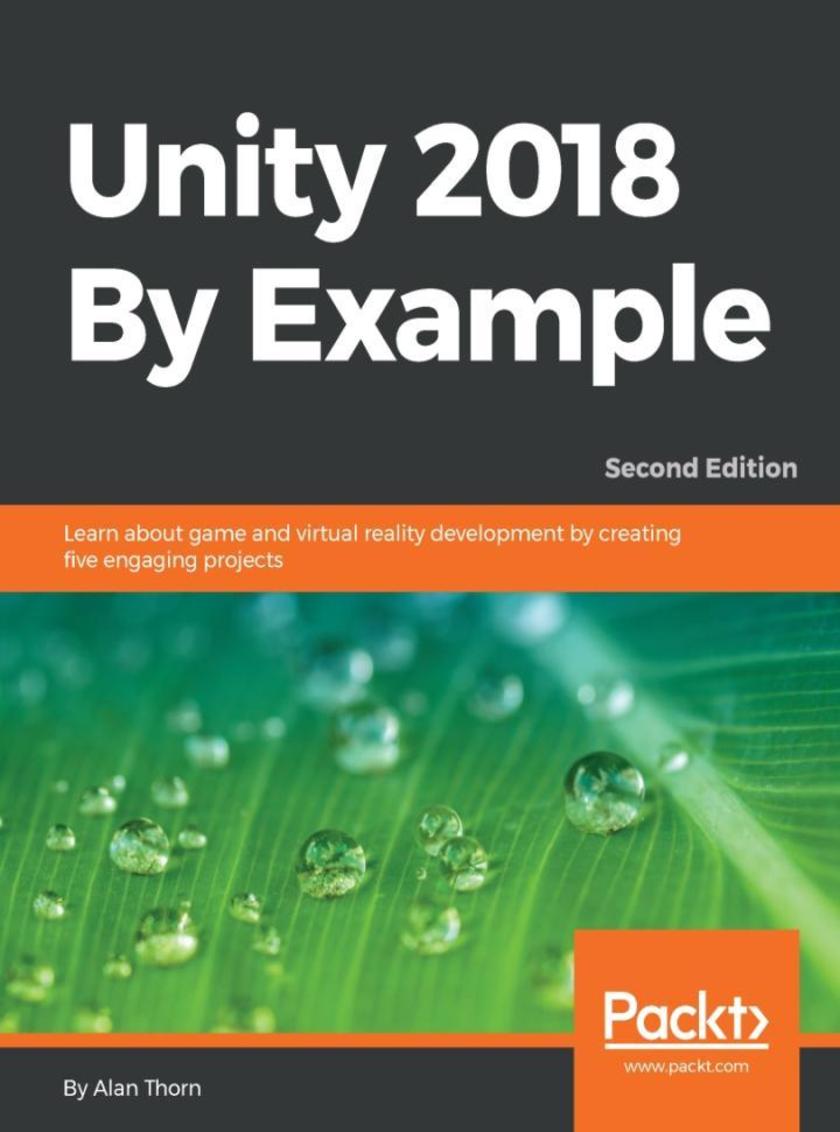
Unity 2018 By Example
¥78.47
Develop intelligent voice-empowered applications and Chatbots that not only understand voice commands but also respond to it Key Features *Target multiple platforms by creating voice interactions for your applications *Explore real-world examples of how to produce smart and practical virtual assistants *Build a virtual assistant for cars using Android Auto in Xamarin Book Description From touchscreen and mouse-click, we are moving to voice- and conversation-based user interfaces. By adopting Voice User Interfaces (VUIs), you can create a more compelling and engaging experience for your users. Voice User Interface Projects teaches you how to develop voice-enabled applications for desktop, mobile, and Internet of Things (IoT) devices. This book explains in detail VUI and its importance, basic design principles of VUI, fundamentals of conversation, and the different voice-enabled applications available in the market. You will learn how to build your first voice-enabled application by utilizing DialogFlow and Alexa’s natural language processing (NLP) platform. Once you are comfortable with building voice-enabled applications, you will understand how to dynamically process and respond to the questions by using NodeJS server deployed to the cloud. You will then move on to securing NodeJS RESTful API for DialogFlow and Alexa webhooks, creating unit tests and building voice-enabled podcasts for cars. Last but not the least you will discover advanced topics such as handling sessions, creating custom intents, and extending built-in intents in order to build conversational VUIs that will help engage the users. By the end of the book, you will have grasped a thorough knowledge of how to design and develop interactive VUIs. What you will learn *Understand NLP platforms with machine learning *Exploit best practices and user experiences in creating VUI *Build voice-enabled chatbots *Host, secure, and test in a cloud platform *Create voice-enabled applications for personal digital assistant devices *Develop a virtual assistant for cars Who this book is for Voice User Interface Projects is for you if you are a software engineer who wants to develop voice-enabled applications for your personal digital assistant devices such as Amazon Echo and Google Home, along with your car’s virtual assistant systems. Some experience with JavaScript is required.

Mastering Proxmox
¥79.56
This is not an instructional guide, but a practical, scenario-based book which guides you through everything you need to know in a practical manner by letting you build your own cluster. By the end of the book, you will have a fully functional Proxmox cluster setup at your disposal and have the knowledge to replicate virtualization solutions .If you already know what the word "virtualization" means and you are ready to stand out from the crowd equipped with the unique ability to design and implement a rock-solid virtualized network environment using Proxmox, then you have just picked up the only book you will need. Linux system administration experience together with knowledge of networking and virtualization concepts is assumed. This book is also useful if you are already using Proxmox and simply want to master its advanced features.
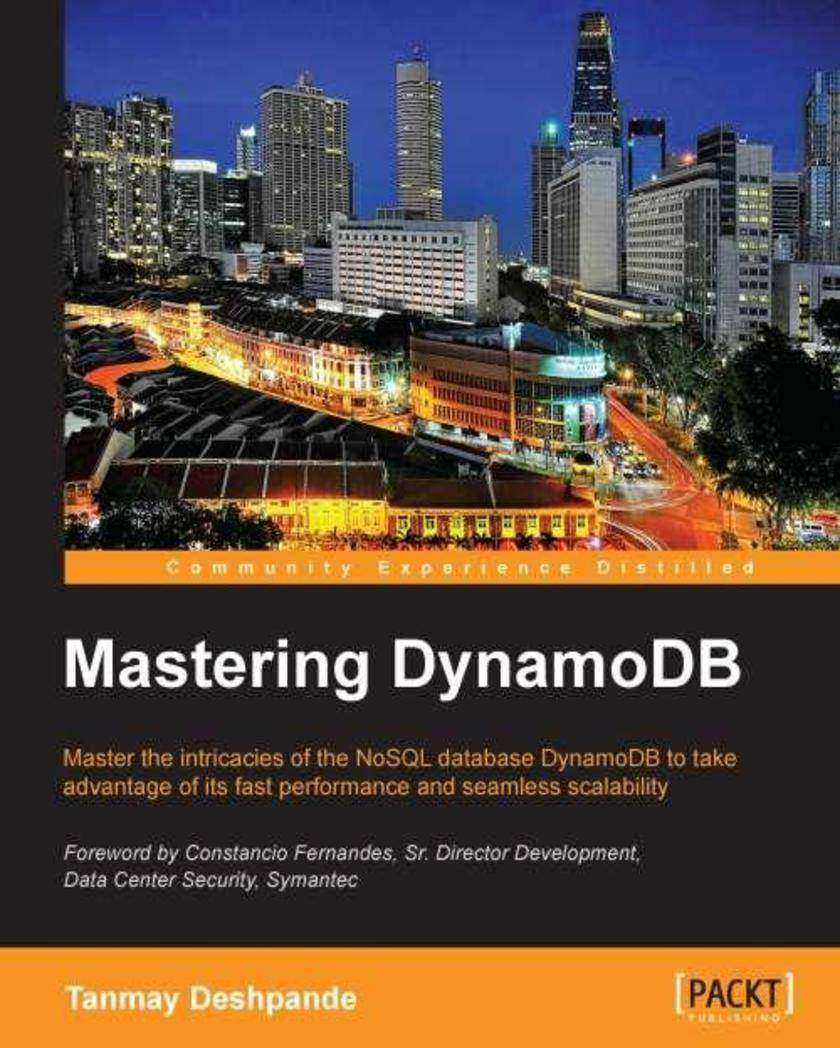
Mastering DynamoDB
¥79.56
If you have interest in DynamoDB and want to know what DynamoDB is all about and become proficient in using it, this is the book for you. If you are an intermediate user who wishes to enhance your knowledge of DynamoDB, this book is aimed at you. Basic familiarity with programming, NoSQL, and cloud computing concepts would be helpful.
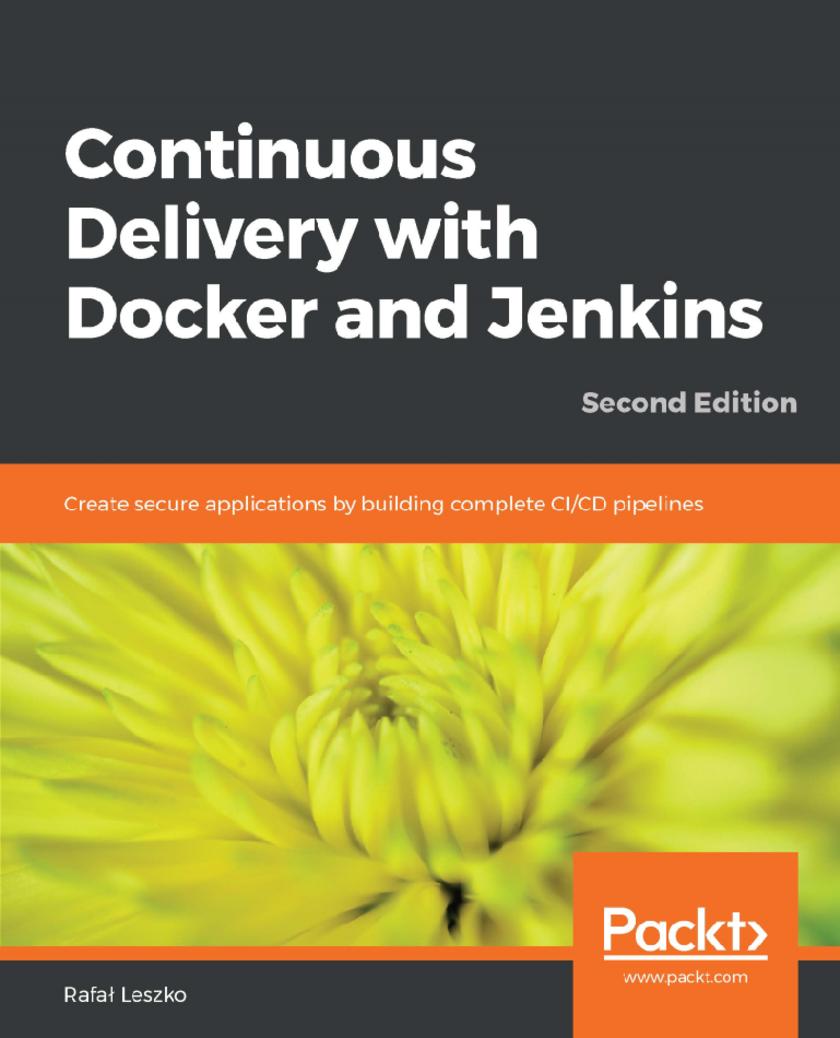
Continuous Delivery with Docker and Jenkins
¥79.56
Create a complete Continuous Delivery process using modern DevOps tools such as Docker, Kubernetes, Jenkins, Docker Hub, Ansible, GitHub and many more. Key Features * Build reliable and secure applications using Docker containers. * Create a highly available environment to scale a Docker servers using Kubernetes * Implement advance continuous delivery process by parallelizing the pipeline tasks Book Description Continuous Delivery with Docker and Jenkins, Second Edition will explain the advantages of combining Jenkins and Docker to improve the continuous integration and delivery process of an app development. It will start with setting up a Docker server and configuring Jenkins on it. It will then provide steps to build applications on Docker files and integrate them with Jenkins using continuous delivery processes such as continuous integration, automated acceptance testing, and configuration management. Moving on, you will learn how to ensure quick application deployment with Docker containers along with scaling Jenkins using Kubernetes. Next, you will get to know how to deploy applications using Docker images and testing them with Jenkins. Towards the end, the book will touch base with missing parts of the CD pipeline, which are the environments and infrastructure, application versioning, and nonfunctional testing. By the end of the book, you will be enhancing the DevOps workflow by integrating the functionalities of Docker and Jenkins. What you will learn * Get to grips with docker fundamentals and how to dockerize an application for the CD process * Learn how to use Jenkins on the Cloud environments * Scale a pool of Docker servers using Kubernetes * Create multi-container applications using Docker Compose * Write acceptance tests using Cucumber and run them in the Docker ecosystem using Jenkins * Publish a built Docker image to a Docker Registry and deploy cycles of Jenkins pipelines using community best practices Who this book is for The book targets DevOps engineers, system administrators, docker professionals or any stakeholders who would like to explore the power of working with Docker and Jenkins together. No prior knowledge of DevOps is required for this book.
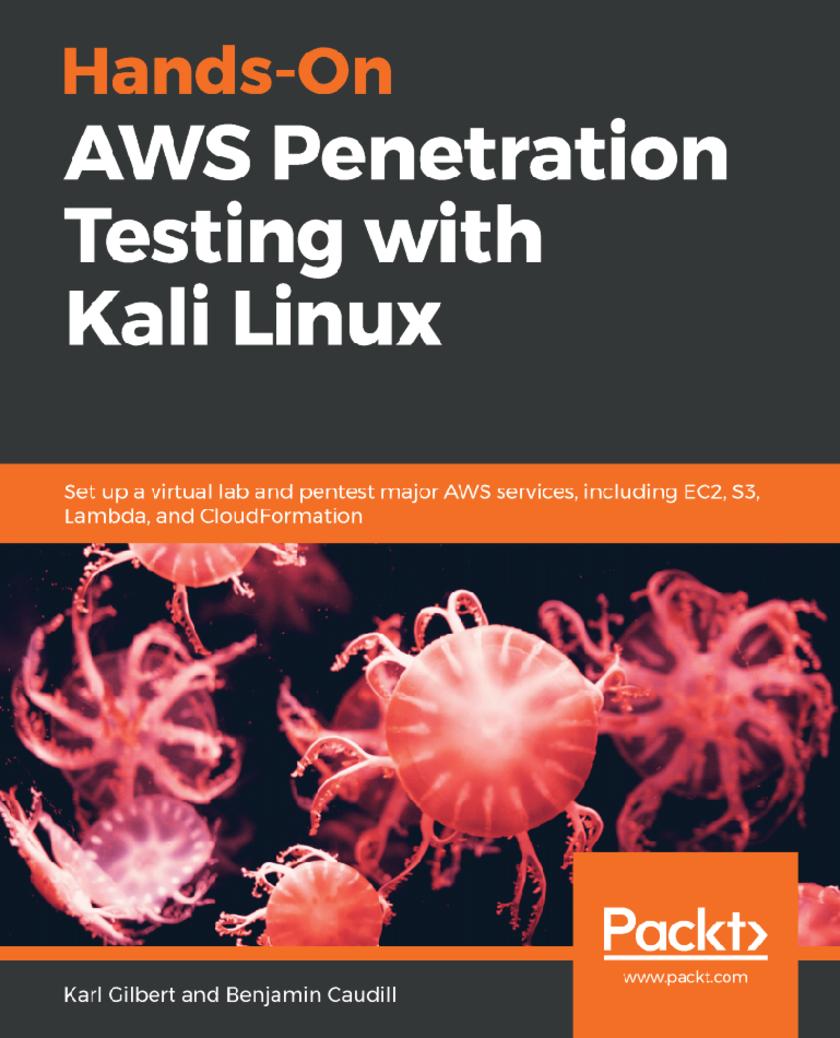
Hands-On AWS Penetration Testing with Kali Linux
¥79.56
Identify tools and techniques to secure and perform a penetration test on an AWS infrastructure using Kali Linux Key Features * Efficiently perform penetration testing techniques on your public cloud instances * Learn not only to cover loopholes but also to automate security monitoring and alerting within your cloud-based deployment pipelines * A step-by-step guide that will help you leverage the most widely used security platform to secure your AWS Cloud environment Book Description The cloud is taking over the IT industry. Any organization housing a large amount of data or a large infrastructure has started moving cloud-ward — and AWS rules the roost when it comes to cloud service providers, with its closest competitor having less than half of its market share. This highlights the importance of security on the cloud, especially on AWS. While a lot has been said (and written) about how cloud environments can be secured, performing external security assessments in the form of pentests on AWS is still seen as a dark art. This book aims to help pentesters as well as seasoned system administrators with a hands-on approach to pentesting the various cloud services provided by Amazon through AWS using Kali Linux. To make things easier for novice pentesters, the book focuses on building a practice lab and refining penetration testing with Kali Linux on the cloud. This is helpful not only for beginners but also for pentesters who want to set up a pentesting environment in their private cloud, using Kali Linux to perform a white-box assessment of their own cloud resources. Besides this, there is a lot of in-depth coverage of the large variety of AWS services that are often overlooked during a pentest — from serverless infrastructure to automated deployment pipelines. By the end of this book, you will be able to identify possible vulnerable areas efficiently and secure your AWS cloud environment. What you will learn * Familiarize yourself with and pentest the most common external-facing AWS services * Audit your own infrastructure and identify flaws, weaknesses, and loopholes * Demonstrate the process of lateral and vertical movement through a partially compromised AWS account * Maintain stealth and persistence within a compromised AWS account * Master a hands-on approach to pentesting * Discover a number of automated tools to ease the process of continuously assessing and improving the security stance of an AWS infrastructure Who this book is for If you are a security analyst or a penetration tester and are interested in exploiting Cloud environments to reveal vulnerable areas and secure them, then this book is for you. A basic understanding of penetration testing, cloud computing, and its security concepts is mandatory.
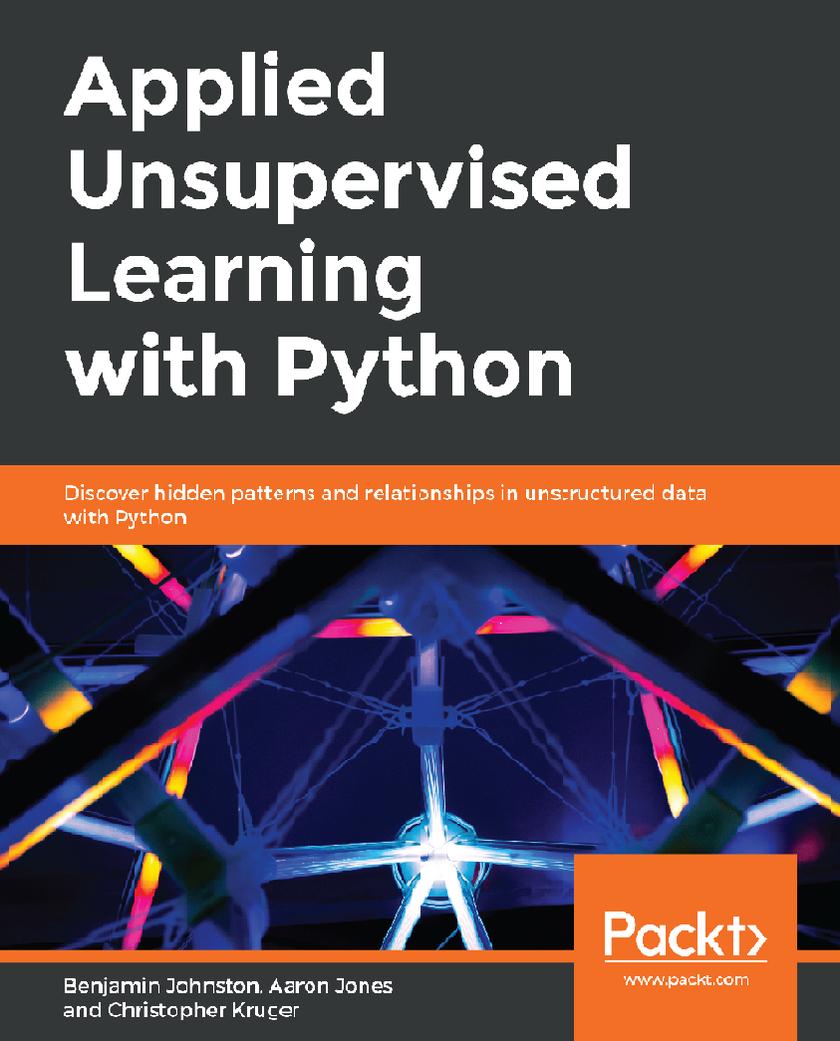
Applied Unsupervised Learning with Python
¥79.56
Design clever algorithms that can uncover interesting structures and hidden relationships in unstructured, unlabeled data Key Features * Learn how to select the most suitable Python library to solve your problem * Compare k-Nearest Neighbor (k-NN) and non-parametric methods and decide when to use them * Delve into the applications of neural networks using real-world datasets Book Description Unsupervised learning is a useful and practical solution in situations where labeled data is not available. Applied Unsupervised Learning with Python guides you on the best practices for using unsupervised learning techniques in tandem with Python libraries and extracting meaningful information from unstructured data. The course begins by explaining how basic clustering works to find similar data points in a set. Once you are well versed with the k-means algorithm and how it operates, you’ll learn what dimensionality reduction is and where to apply it. As you progress, you’ll learn various neural network techniques and how they can improve your model. While studying the applications of unsupervised learning, you will also understand how to mine topics that are trending on Twitter and Facebook and build a news recommendation engine for users. You will complete the course by challenging yourself through various interesting activities such as performing a Market Basket Analysis and identifying relationships between different merchandises. By the end of this course, you will have the skills you need to confidently build your own models using Python. What you will learn * Understand the basics and importance of clustering * Build k-means, hierarchical, and DBSCAN clustering algorithms from scratch with built-in packages * Explore dimensionality reduction and its applications * Use scikit-learn (sklearn) to implement and analyse principal component analysis (PCA)on the Iris dataset * Employ Keras to build autoencoder models for the CIFAR-10 dataset * Apply the Apriori algorithm with machine learning extensions (Mlxtend) to study transaction data Who this book is for This course is designed for developers, data scientists, and machine learning enthusiasts who are interested in unsupervised learning. Some familiarity with Python programming along with basic knowledge of mathematical concepts including exponents, square roots, means, and medians will be beneficial.

Lumion 3D Cookbook
¥79.56
This book offers uses practical applications using recipes with step-by-step instructions and useful information to help you master how to produce professional architectural visualizations in Lumion. The cookbook approach means you need to think and explore how a particular feature can be applied in your project and perform the intended task. This book is written to be accessible to all Lumion users and is a useful guide to follow when becoming familiar with this cutting-edge real-time technology.This practical guide is designed for all levels of Lumion users who know how to model buildings in 3D and a basic understanding of Lumion, who want to enhance their skills to the next level.
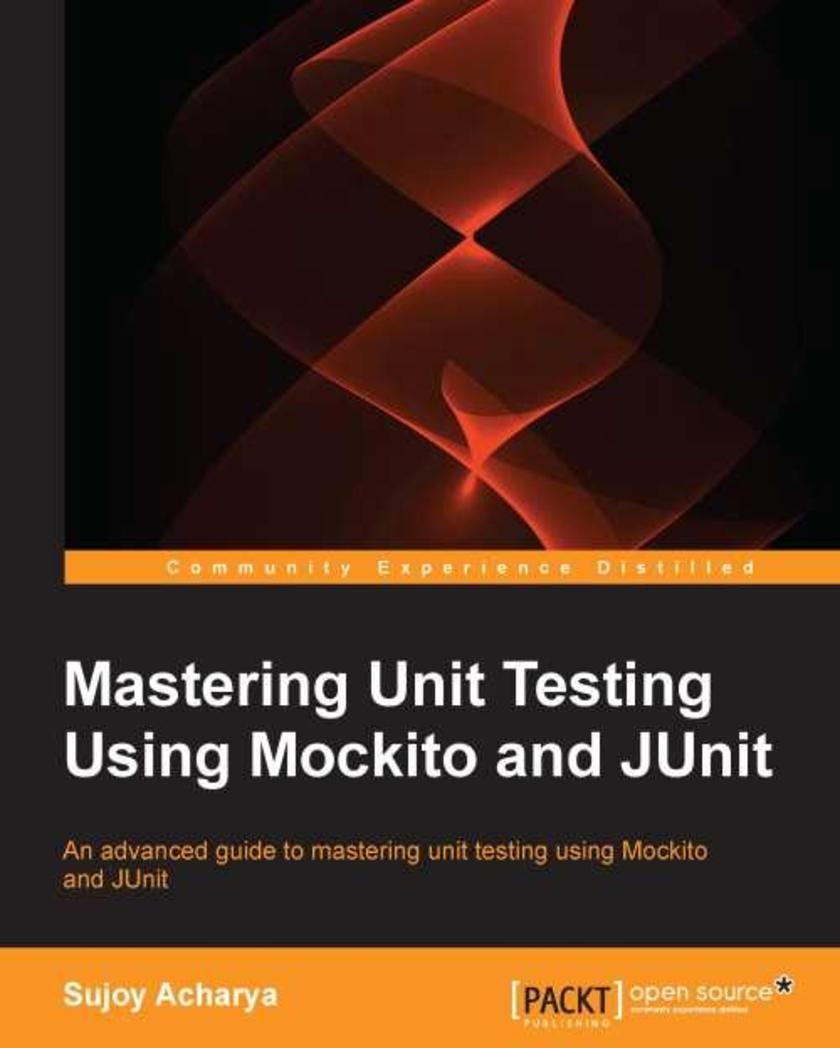
Mastering Unit Testing Using Mockito and JUnit
¥79.56
A practical and easy-to-follow, yet comprehensive, guide to learning advanced JUnit testing. Each topic is explained and placed in context, and for the more inquisitive, there are more details of the concepts used. This book is for you if you are a developer with some experience in Java application development as well as a basic knowledge of JUnit testing. But for those whose skill set is void of any prior experience with JUnit testing, the book also covers basic fundamentals to get you acquainted with the concepts before putting them into practise.
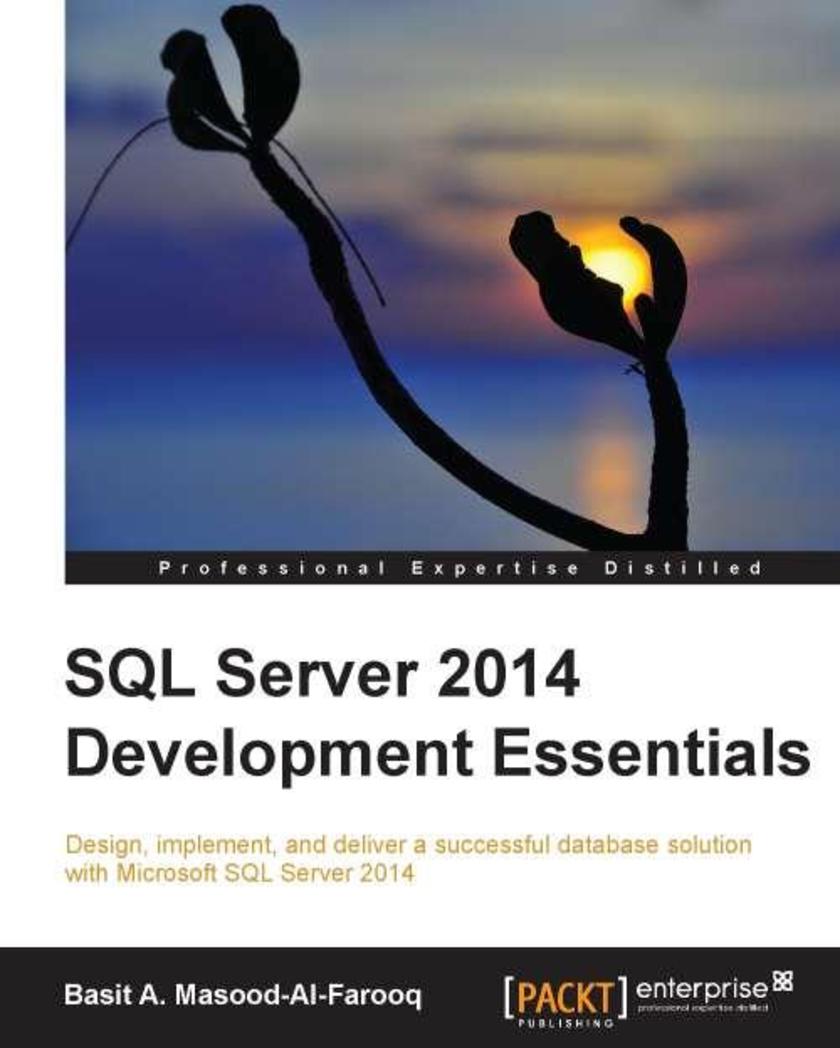
SQL Server 2014 Development Essentials
¥79.56
This book is an easy-to-follow, comprehensive guide that is full of hands-on examples, which you can follow to successfully design, build, and deploy mission-critical database applications with SQL Server 2014. If you are a database developer, architect, or administrator who wants to learn how to design, implement, and deliver a successful database solution with SQL Server 2014, then this book is for you. Existing users of Microsoft SQL Server will also benefit from this book as they will learn what's new in the latest version.




 购物车
购物车 个人中心
个人中心



